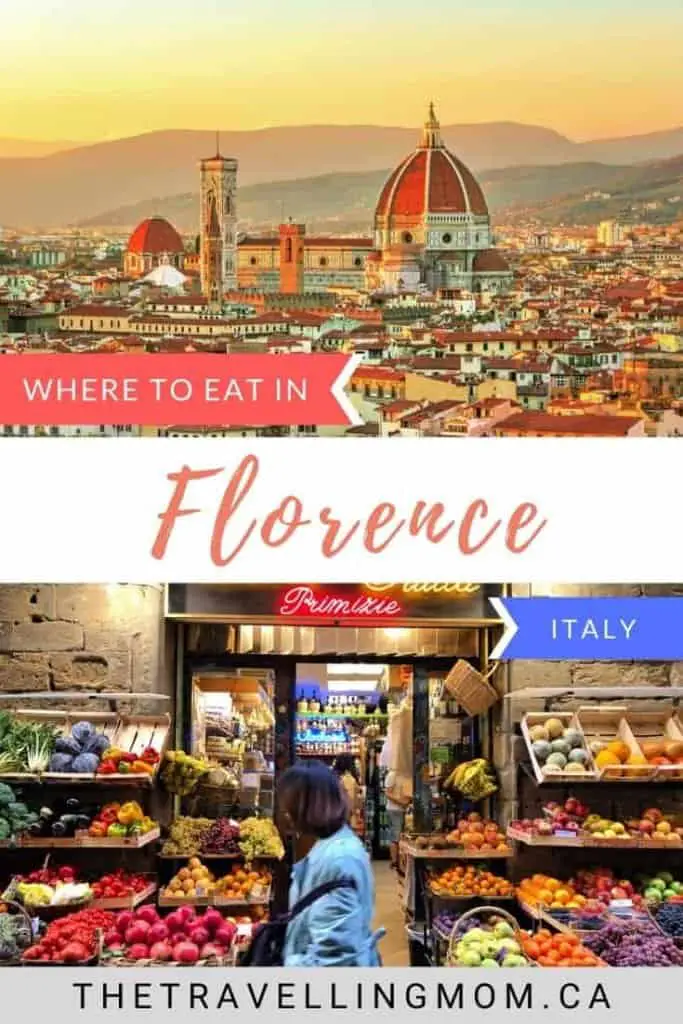Florence is one of the most popular destinations in Italy. Millions of visitors come from around the world to admire Florence’s incredible unmissable attractions, like Michelangelo’s David, wander the Uffizi Gallery, cross the Ponte Vecchio and marvel at the city’s magnificent Duomo. Florence is also a feast for the stomach. Whether you’re visiting this incredible city for one day or seven, enjoying its culinary delights is going to be high up on your travel to do list. While learning about the rules of eating in Italy, we enjoyed delicious foodie experiences during our Monograms Travel tour. From hole-in-the-wall panini palaces to Michelin-starred gucci rooms, our list delivers authentic Tuscan food experiences no matter the budget. We invite you to eat, drink, and buon appetito!

Where to eat in Florence
Your morning espresso and cornetto
Café Scudieri is a well-known local caffe near the Florence Duomo (Cathedral). In business since 1939, this elegant caffe is popular at all times of the day, due to its excellent coffee and proximity to the busy Duomo.
Pay first at the cashier, then present your receipt to the barman for your espresso, cappuccino and cornetto. If you do as Florentines and Italians do, you’ll stand at the bar, drink your cappuccino quickly and be off to start the day.
Scudieri also has a large selection of baked goods and desserts, and is open late. I purchased some local pan forte here, a traditional dense cake-like dessert studded with fruits and nuts. It’s excellent with coffee, cheese, or all on its own.
Use the map below to search for hotel and short-term rental options
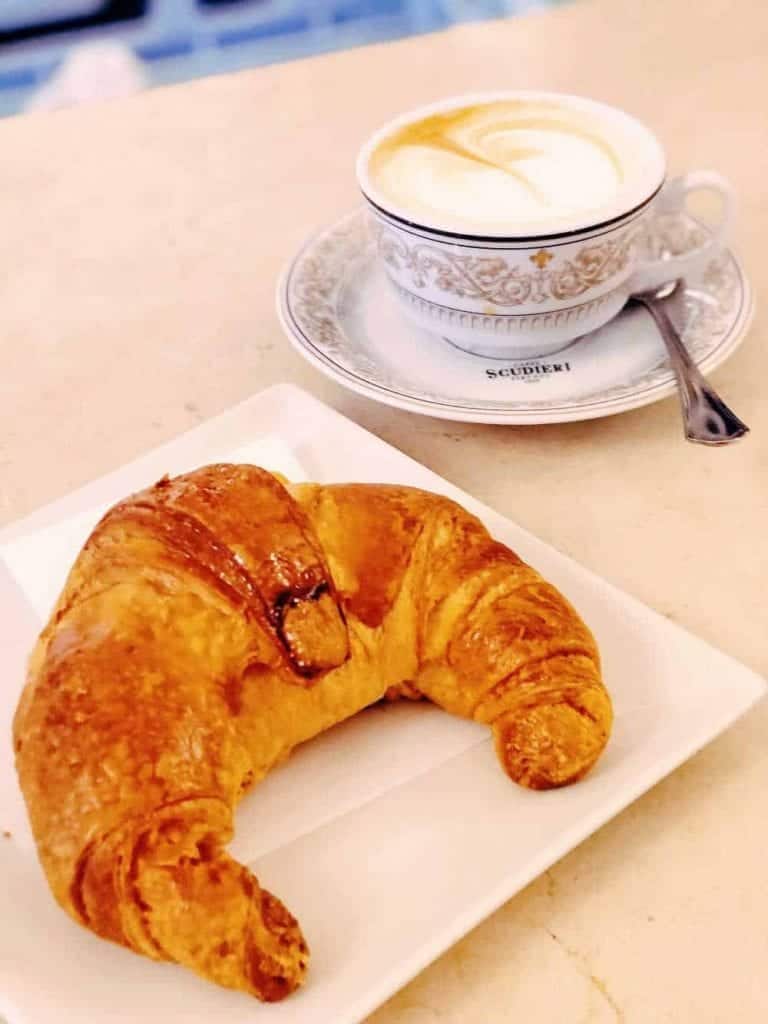
Florence Food Tours
Remember our tasty Testaccio tour of all the great foodie spots in that Roman neighbourhood? Well, you can have a similar divine dining experience with an Eating Europe tour of Florence. Food tours are a GREAT way to get an idea about where to eat in the city. Even if you’re only planning on spending two days in Florence.
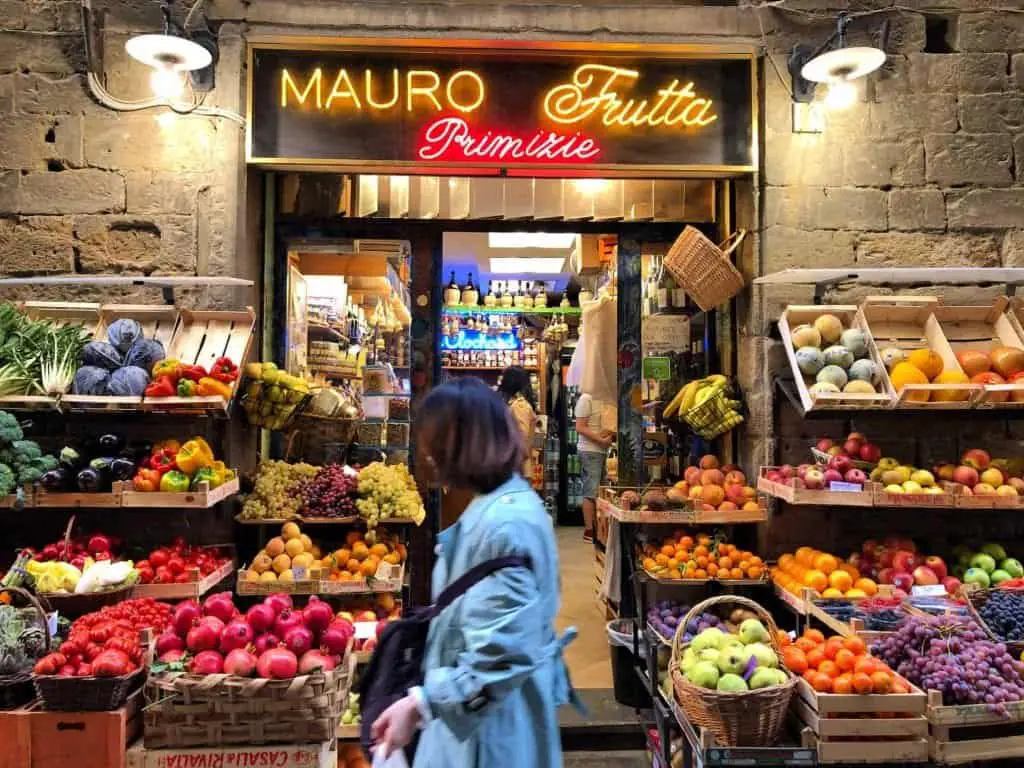
Set off as the sun gets low and be introduced to some of the best restaurants and wine bars in Florence. Sip cocktails at aperitivo o’clock, savour artisanal truffle cheese and cured local meats. Learn (then eat) how to cook the famous Florentine steak, the Bistecca alla Fiorentina.
The Other Side of Florence Food Tour
On this 4-hour walking food tour through Oltrarno – the Florentine equivalent of Paris’ left bank – guests get to taste what makes this city’s cuisine so special and unique within Italy.
There are eight stops along the tour. You’ll learn how Italian cantucci (cookies) are made, sample local salami, cheese, soup and meat dishes in local family-run osterias. The Oltrarno neighbourhood has a pleasing Bohemian vibe, filled with students, artists and lively culture.
A foodie’s dream culinary adventure! Spend a day in Florence following your nose, or the trained dog’s nose in this case, in search of truffles in the Tuscan countryside.
Truffle hunting in Italy is an authentic cultural experience, and this tour educates guests on the history and stories behind the hunt. It’s followed by a delicious home-cooked meal at a Tuscan ‘fattoria’ (farm) that includes local wine and pasta made with truffles from the experience.
Most of these food tours cost between 70-100 Euros per person.
Other Tours
Authentic Florence Home-Cooking Class


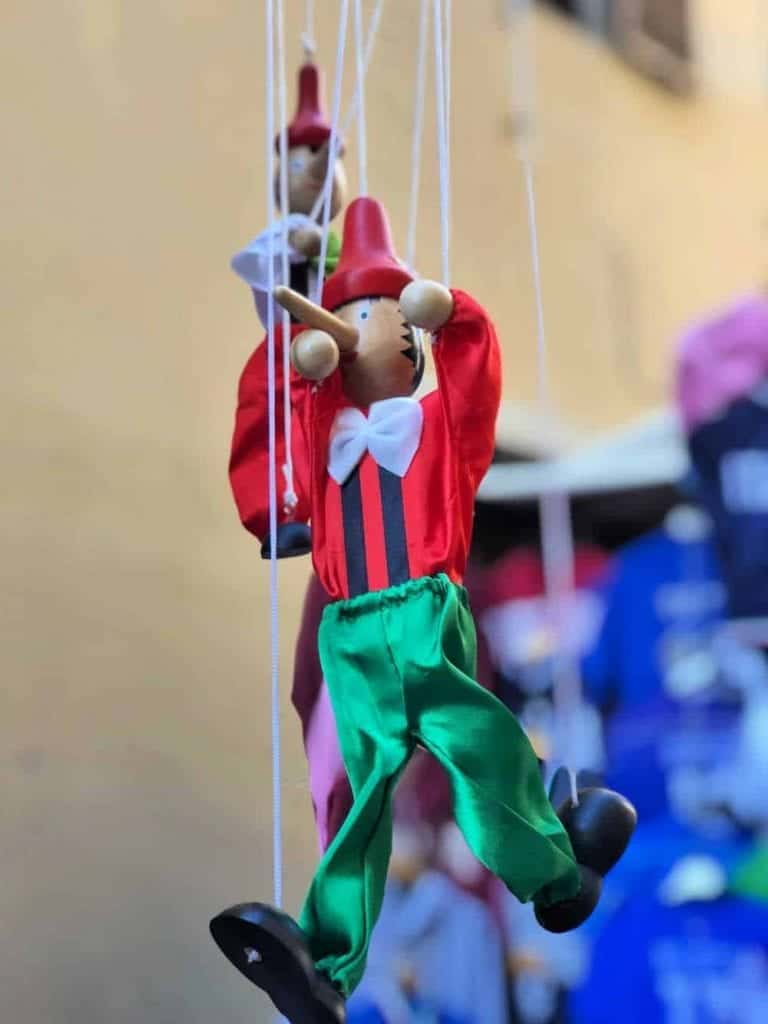
The San Lorenzo Market
After our initials Ciaos of greeting, the first words of wisdom I received from our Florentine Monograms guide Ornella were to pop into the San Lorenzo Market for lunch. I’m doing you a solid by passing along that same advice. Go. Eat. Enjoy.
The San Lorenzo market is actually comprised of two separate markets. The outdoor market of white canvas stalls lines the streets in downtown Florence. The stalls are packed with leather goods, like purses, belts and wallets, as well as clothing, notebooks and souvenirs. It’s fun to walk the crowded streets, through in the heat of summer, not so much.
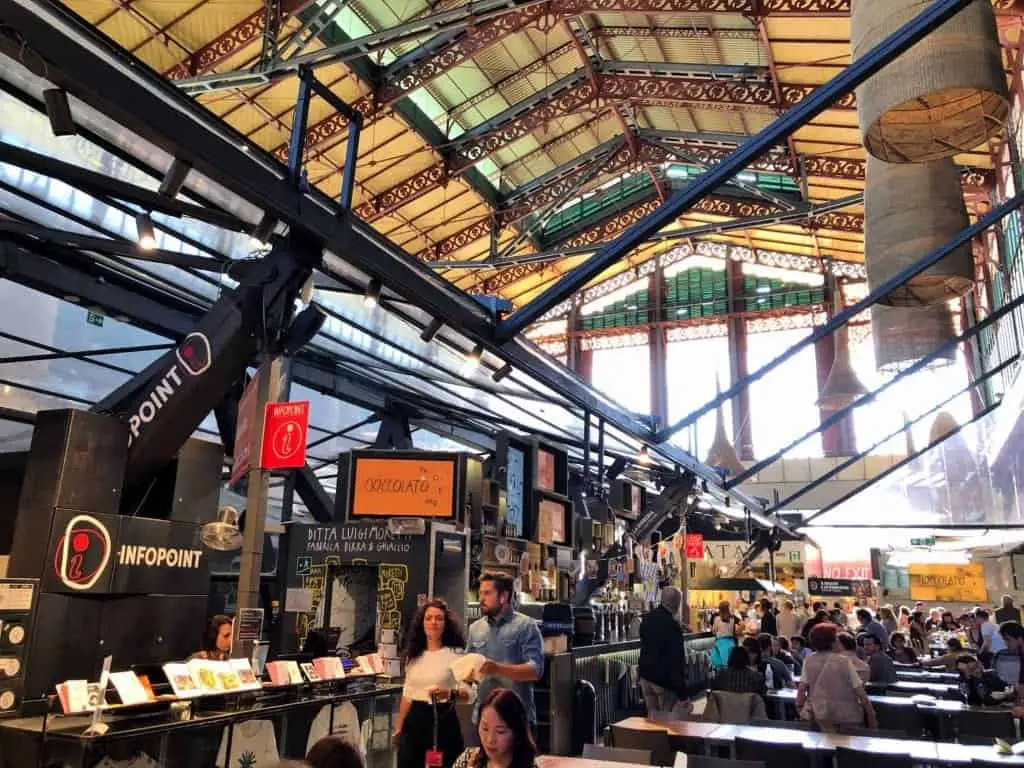
Mercato Centrale
The indoor market is known as the Mercato Centrale (Central Market). THIS is the foodie palace you need to see. Located in a beautiful 19thcentury structure with a high glass ceiling, the Mercato is two levels of food bliss. Fun fact: The Market building was designed by Giuseppe Mengoni. He is behind the gorgeous Galleria Vittorio Emmanuelle II in Milan.
Cheesemongers, butchers, florists, greengrocers and bakers fill main street level. Stop at Parini’s to sample and shop for cured meats like prosciutto. Learn about unfamiliar cuts of meat like cow stomach and tongue. You can also find food souvenirs to bring Florence home with you. Think truffle honey, EVO oil, aged balsamic vinegar, crackers and cookies. Yum!
First Floor foodie bliss
The second level of the Market, known as the First Floor, is basically a gourmet food court. Open until midnight seven days a week, there are twelve stalls or sections each dedicated to a different Italian speciality. There are 500 seats in the Market, so you shouldn’t have a problem finding a place to enjoy your food, provided you can decided on what to eat!
The prepared food stalls serve up everything from local cheese and meats, Chianti wine, roast chicken, pizza, pasta, Trapizzini, vegan and vegetarian dishes, Chinese dumplings, chocolate and gelato. And of course, espresso. There’s also a Giunti bookstore stocked with cookbooks. And a ‘Fiorentina’ store packed with gear and swag to show your pride in the local soccer team. (Tip: These are great souvenirs for any soccer-mad kiddos.)
After spending time strolling the food stalls at street level, I headed upstairs to wander past the prepared food stations on the First Floor. I chose a barstool at Tosca, tucking into enjoyed a fabulous late lunch of gnocchi with wild boar ragù. This is a local specialty that I paired with another local specialty, a nice red Chianti.
There’s actually an entire Chianti Classico wine bar on the First Floor. Here, you can try to make your way through a bewildering number of wines produced by the wine consortium. Good thing the market is open until midnight.
I loved the Mercato Centrale for its accessibility, food variety, long hours, and laid back atmosphere. It’s chaotic and busy and mixed with locals, tourists, families and couples eating all kinds of food at all times of the day.

Take a pasta-making class in the countryside
While I’m of Italian descent, I didn’t grow up making pasta. My Nonna (grandmother) made all the pasta for our family. I recall large bags of dried green (spinach) linguini and spaghetti sitting in our pantry awaiting the weekly boil. I didn’t even know there was another colour of pasta until I was in my teens.
So, when I had the chance to sign up for a pasta-making class on a local fattoria (farm) through my Monograms local host, I jumped at it.
The class took place at the Fattoria il Poggio in Monte Carlo. This small town is about 50 minutes from Florence in Lucca. Being a Monograms excursion, my private transportation to and from the farm was already arranged and included.
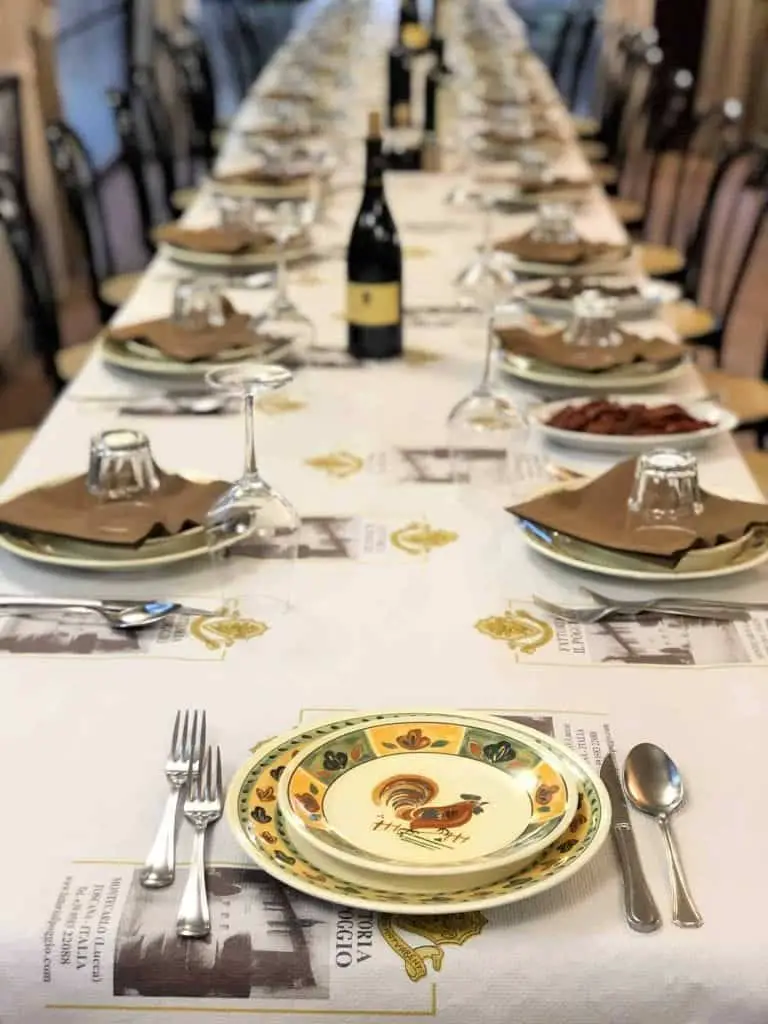
Cooking at Fattoria il Poggio
The Fattoria il Poggio has been in the same family since the 1960s. It’s a 50-acre farm, winery, olive grove, and restaurant that makes its own olive oil, balsamic vinegar, and wine. The pasta class took place in the farmhouse kitchen once occupied by the family’s Nonna and had the feel of authenticity. And cooking success.
Alessandra was my guide in the pasta class, and after she poured me a glass of the local white and I slipped on my apron, we started up on learning how to make egg pasta.
There are only three ingredients to egg pasta: 00 flour, egg and a pinch of salt. I mixed, kneaded and rolled out the dough until it was thin and soft. Then we proceeded to use some pasta instruments to cut and shape the pasta into its many delicious varieties. There are so many different kinds – tagliatelle, pappardelle, macaroni, ravioli, mezzaluna, tortellini!
As we’re working, several family members and kids come through the apartment. I feel right at home in their home. In case you were wondering, a pasta or pizza-making class is a perfect family activity to do on holiday in Florence. If the kids are old enough to hold a folk and mix an egg and flour together, they’ll enjoy testing their cooking skills at il Poggio.
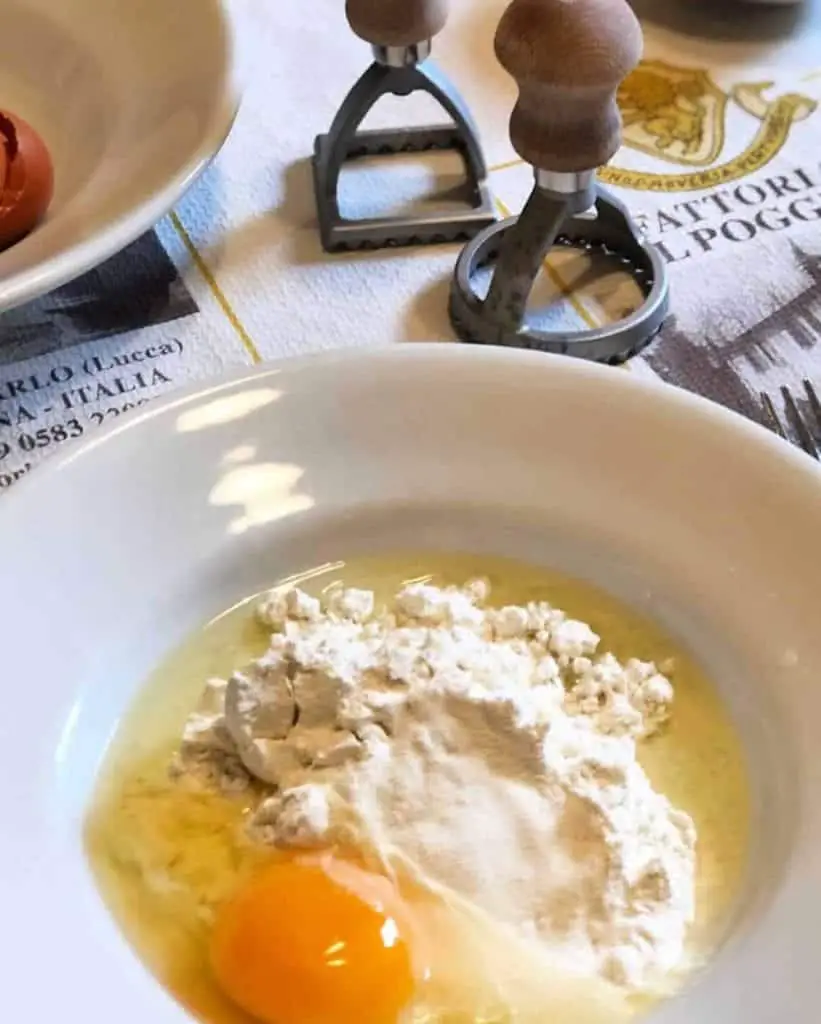
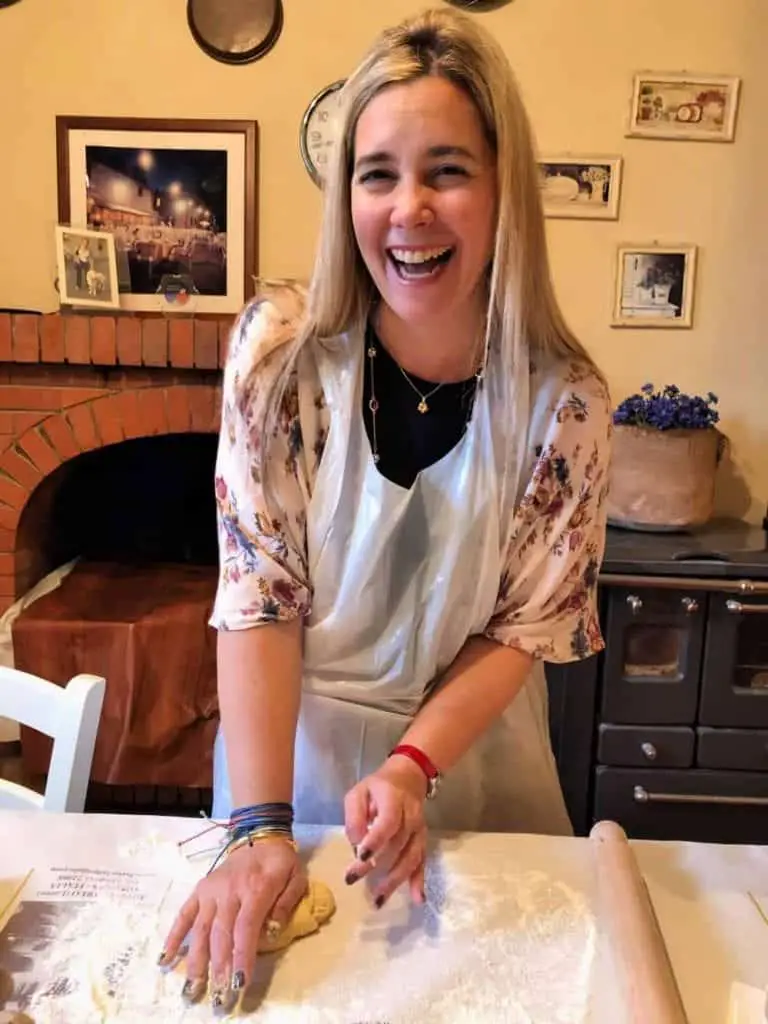

After the class, we strolled the grounds through olive trees and past the grapevines. Harvest time is early fall until before Christmas. If you visit during that time you’ll likely get to see some olive pressing and grape harvesting.
The pasta class complete, I enjoyed a multi-course farm dinner with locally grown olives, bruschetta with liver pate (a local specialty), super thin pappardelle pasta with ragu, roasted meats, and a traditional dessert of Vin Santo with cantucci cookies for dipping. The meals include wine pairings, with a strong Grappa digestif to finish the meal. Make sure you arrange a taxi.
Restaurants in Florence
We’re offering a sample menu of restaurants that run from street food to contemporary to super chichi. Gucci, as the young ones say.
Cibrèo Trattoria – There are five Cibrèo restaurants throughout Florence. All of them pay tribute to the foundations of Florentine and Tuscan cuisine. At the moderately-priced Trattoria, enjoy thick soups like papa al pomodoro and ribollita, roasted meats, odd offal dishes like stuffed chicken neck anyone. A specialty is the light, fluffy ricotta and potato sformatino (souffle).
Finisterrae – This Florentine institution serves up traditional dishes like pizza, pasta, local charcuterie, pastry desserts and one of the city’s signature dishes, bistecca alla Fiorentina. It’s a good idea to share these large 1 kg (2.2 lb) T-bone steaks. The meat is sourced locally and measures several inches thick when raw.

The Florentine steak is cooked 10 minutes per side. It’s presented Florentine style in slices, spread out on a salad with thin slices of Parmesan in between. It’s a very flavorful cut, but take note, they do prefer their steak bloody here – sanguine in Italian. Enjoyed with a deep red local Chianti, and you’ll be singing Amore to the table next to you.
Gucci Osteria da Massimo Bottura – If you’ve saved up your pennies, splurge on a decadent meal in the velvet-green opulence of this restaurant room. Part of the Gucci Garden Museum, the food, like tortellini in cream sauce, mushroom risotto, grilled octopus, even a high falutin hot dog, is as delicious as the room and as pretty as the waitstaff.
Lampredotto Panini at L’Trippaio di Firenze – Lampredotto is religion on Florence. In its classic preparation, this Tuscan dish is cooked in a savoury broth and served chopped, stuffed in bread and topped with a green herb and chili sauce. At this this popular stand, they cook lampredotto aka tripe in a range of sauces like artichoke, olives, tomato, or beans and sausage.
Wait, there’s more!
Lo Schiacciavino – A tiny hole in the wall near Santa Croce serving up big panini sandwiches stuffed with the meats and cheeses of your choice, and local glasses of wine for an affordable price. A quick (by Italian standards) and satisfying meal on the go.
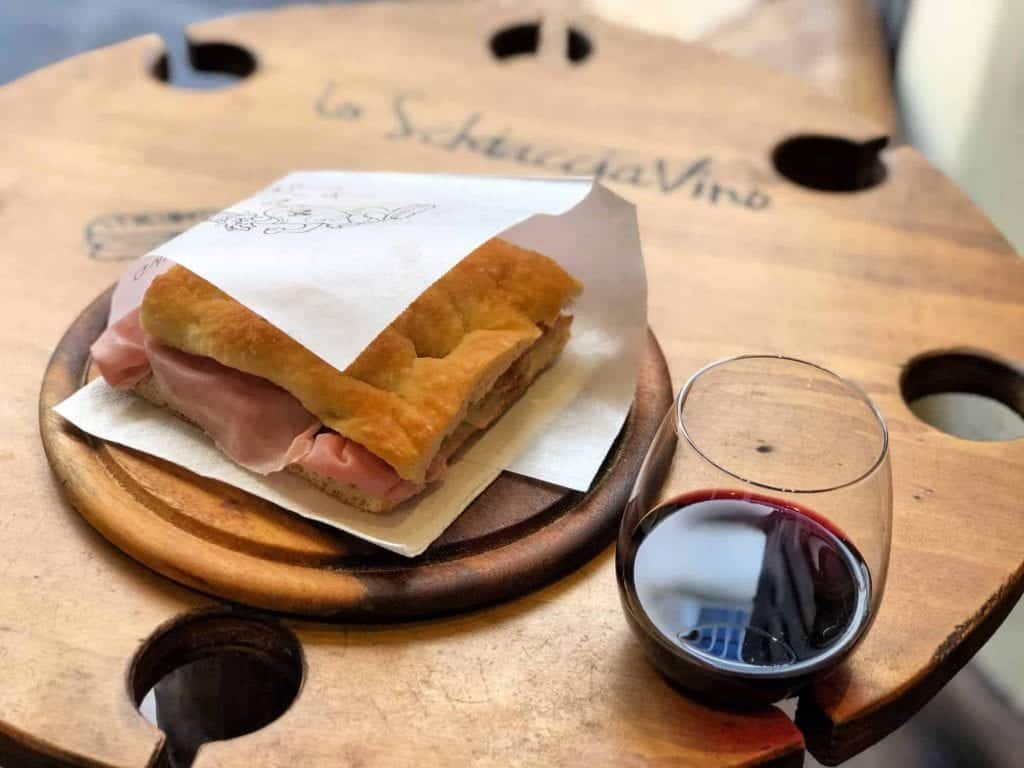
Osteria dell’Enoteca – Located in an ancient Oltrarno townhouse, this restaurant serves up seasonal Tuscan with a twist. Fresh salads with burrata cheese in summer, thick steaks and pasta with venison sauce in winter. All paired with an incredible wine list as the Osteria’s owners also operate nearby wine bar Pitti Gola e Cantina.
Pizzeria Santarpia – Authentic Neapolitan pies in Tuscany? Si! This bright and colourful pizzeria space turns out 150+ pizza a night, all handmade with organic ingredients from Naples, Campania and the Amalfi Coast. All the classic styles are available; Margherita, Marina, Diavola, as well as creative topping twists like ricotta, burrata and truffles. If you can endure the extra calories, the deep-fried pizza fritta may be tempting, provided you’ve planned a good walk around the Uffizi the next day.
Zeb – Get ready to carb-load in real life at this family-run mother and son restaurant in Piazza Michelangelo square. The house specialty is cappellaci, a type of stuffed fresh pasta with fillings like winter squash and ricotta, and sauces like green kale pesto or freshly shave truffles (in season).
Desserts and Gelato in Florence
Dolci e Dolcezze– Fancy pastries in a tiny space, this popular dessert mecca whips up light puff pastry sfoglia and budino di riso (rice pudding in shortbread crust), along with seasonal fruit tarts, flourless chocolate cakes and other sweet treats. Also a great spot for strong espressos or cappuccinos at any hour of the day.
Il Procopio – My friend Eric at TravelBabbo loves this family-owned gelateria because it’s small, mighty, and makes the creamiest, most delicious gelato in the city. They offer a variety of gelatos and fresh-fruit sorbets in such tempting flavors as bread pudding, Black Forest, lemon and basil, and La Follia (madness in Italian), which mixes toasted almond, fig, orange peel and homemade pistachio paste. Delicioso!
Grom – Pure ingredients and ‘making gelato how it used to be made’ ensures that your cup or cone of strawberry, pistachio or nocciole gelato is as delicious as nature intended. Grom (there are locations throughout Italy) produces gelato without the use of flavorings, color or preservatives. The high quality products and its location near the Duomo attract lines, but trust me, it will be worth the wait.
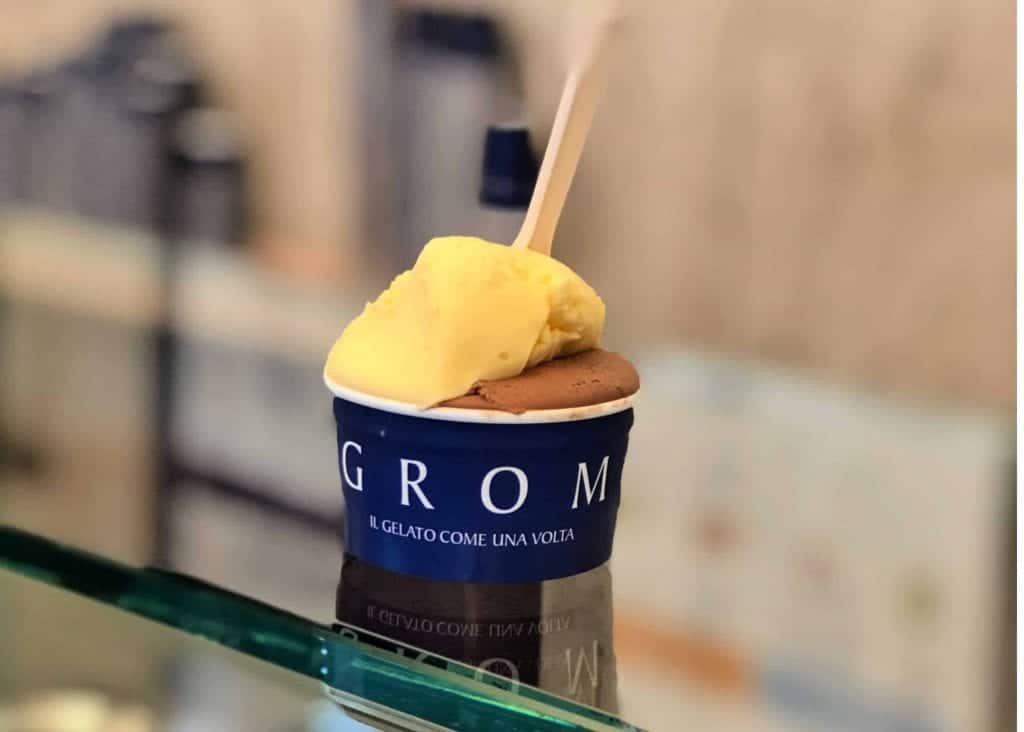
Whether you enjoy pappardelle with wild boar in the Mercato Centrale, go hunting for truffles on a food tour, or get arms deep in pasta dough in the countryside, you won’t go hungry eating your way through Florence.
Pin for Later
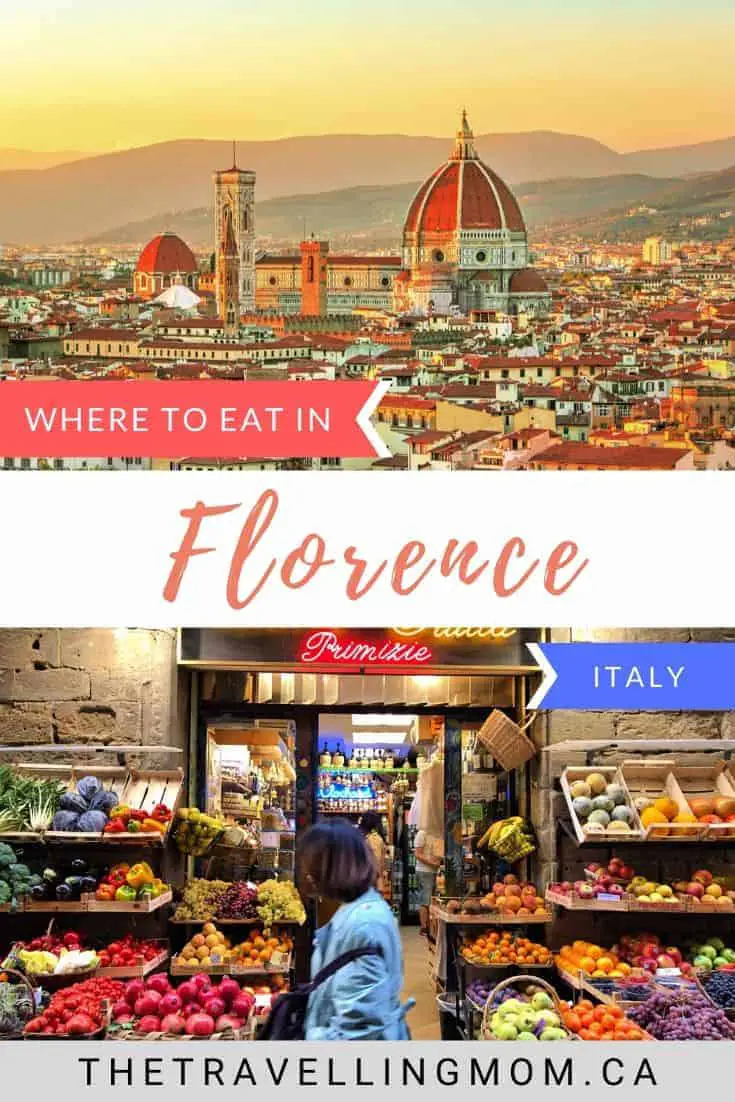
Disclosure: The writer thanks Monograms Travel for hosting her stay and foodie experiences in Florence. As always, her opinions and love of pizza, pasta and a nice Chianti are all her own. This article contains affiliate links.
Photo Credits: Featured image courtesy Shutterstock. All other images are Claudia Laroye.
- 7 unique places to experience Ainu culture in Hokkaido - March 22, 2024
- How to enjoy Vancouver’s Cherry Blossom Season - March 21, 2024
- 23 surprising things to do in Abbotsford - March 18, 2024

